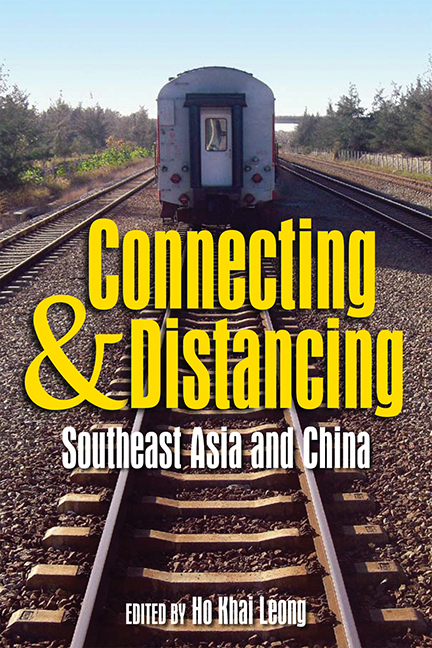Book contents
- Frontmatter
- Contents
- Contributors
- Introduction
- PART I History and Remembrance
- 1 China Meets Southeast Asia: A Long-Term Historical Review
- 2 Philippine-China Connection from Pre-Colonial Period to Post-Cold War Era: An Assessment
- 3 Defining Identity through Remembering the War: Representation of World War II in Chinese Newspapers in the Immediate Post-war Singapore
- 4 Re-positioning “Patriotism”: Various Aspects of Financial Support to China in Penang around 1911
- 5 Perceptions of China for the Overseas Chinese Tea Traders in Colonial Singapore, 1928–58
- 6 Myanmar's Relations with China from Tagaung through Hanthawati-Taungngu Periods
- PART II The Cultural and Chinese Identity
- PART III Economy, Politics and Regionalism
- Index
1 - China Meets Southeast Asia: A Long-Term Historical Review
from PART I - History and Remembrance
Published online by Cambridge University Press: 21 October 2015
- Frontmatter
- Contents
- Contributors
- Introduction
- PART I History and Remembrance
- 1 China Meets Southeast Asia: A Long-Term Historical Review
- 2 Philippine-China Connection from Pre-Colonial Period to Post-Cold War Era: An Assessment
- 3 Defining Identity through Remembering the War: Representation of World War II in Chinese Newspapers in the Immediate Post-war Singapore
- 4 Re-positioning “Patriotism”: Various Aspects of Financial Support to China in Penang around 1911
- 5 Perceptions of China for the Overseas Chinese Tea Traders in Colonial Singapore, 1928–58
- 6 Myanmar's Relations with China from Tagaung through Hanthawati-Taungngu Periods
- PART II The Cultural and Chinese Identity
- PART III Economy, Politics and Regionalism
- Index
Summary
This chapter provides a long-term historical and present-day perspective of China-Southeast Asian interactions and their dynamics. In this study of how China-Southeast Asian interactions are shaped, attention is paid not only to the political and economic aspects in terms of so-called “legitimate” institutional relationships from above, but also to the socio-cultural elements in terms of Chinese migration from below. The chapter will explicate these facts in five parts: images of contrasts and contradictions; tributary system and maritime trade, from early time to the mid-nineteenth century; Western expansion and Chinese migration, from the mid-nineteenth century to mid-twentieth century; nation-building and the Cold War, from the mid-twentieth century to early 1990s; and globalization and strategic partnership, from the early 1990s to the present.
I. IMAGES OF CONTRASTS AND CONTRADICTIONS
Chinese language was so badly conserved in Thailand that even he was unable to find a Chinese newspaper to read. A Chinese journalist complained to his Singaporean counterpart upon his return from his golden week holidays in Thailand.
How come? The Singaporean journalist was very suspicious and puzzled. There are six Chinese daily newspapers indeed as far as she knows.
There was no Chinese newspaper available in the flights of the Thai Airline.
Their crews even knew no Chinese so that he had to speak English to ask for a cup of water. The Chinese journalist refuted.
Why did you think that the Thai people should speak Chinese? The Singaporean journalist then asked.
This was because China and Thailand are close neighbors geographically and Thailand had been a tributary state to China over centuries in history.
Chinese culture supposedly should be better conserved. The Chinese journalist explained.
Do you still think Japanese or American crews should speak Chinese if you take JA or UA flights served on the China route? The Singaporean journalist then asked.
No! The Chinese journalist admitted honestly. (Lianhe Zaobao, 13 October 2006)
It is believed that the interesting newspaper report above is not an isolated case.
- Type
- Chapter
- Information
- Connecting and DistancingSoutheast Asia and China, pp. 3 - 30Publisher: ISEAS–Yusof Ishak InstitutePrint publication year: 2009



